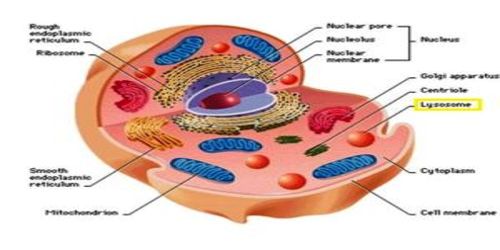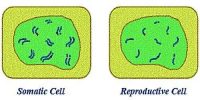A lysosome is a type of membrane-bound organelle that is present in animal cells. It is formed by various enzyme bounded by a membrane. Normally they are spherical. Their membrane is bi-layered. They are organelles that contain digestive enzymes. They digest excess or worn out organelles, food particles, and engulfed viruses or bacteria. Lysosomes are like the stomach of the cell.
Function: Their functions are phagocytosis i.e. to eat the invading enemy in the cell, to protect different organelles in the cell by dissolving enzymes and to help indigestion. Lysosomes function as the digestive system of the cell, serving both to degrade material taken up from outside the cell and to digest obsolete components of the cell itself. They are also in charge of cellular homeostasis, plasma membrane repair, cell signalling, and energy metabolism.
Structure: Lysosomes range in size from 0.1 to 1.2 micrometres. Structurally, lysosomes are like a floating garbage bag that contains enzymes capable of digesting molecules.
- The outer surface is formed by a single membrane, a phospholipid bilayer that can fuse with some other membrane-bound organelles.
- The approximately spherical shape of diameter ranging up to one micrometre (1 μm).
- A single lysosome contains many enzyme molecules.












